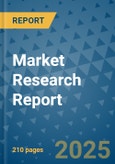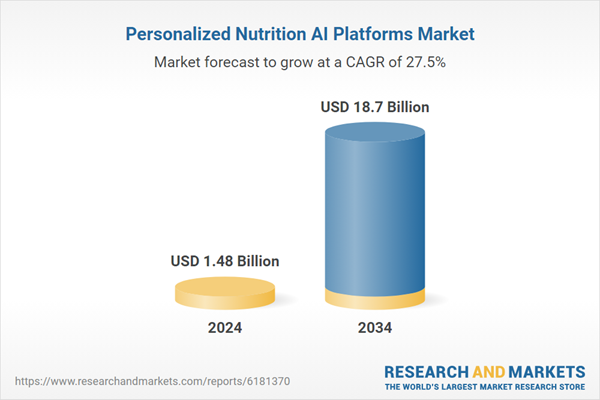Market growth is fueled by increasing consumer demand for personalized health and wellness solutions that move beyond the conventional one-size-fits-all model. As people grow more health-conscious and seek preventive care, AI-powered platforms offering nutrition guidance tailored to each user’s biological profile, lifestyle, and health goals are seeing a rapid rise in popularity. Consumers now prefer hyper-personalized meal planning and supplement services that factor in allergies, dietary goals, and medical history. The growing interest in performance optimization and fitness-focused diets among active individuals further contributes to market momentum. These platforms are increasingly integrated with complex biological data like genomics, proteomics, and microbiome analysis to deliver nutrition advice that's aligned with each individual’s unique physiological traits. By harnessing this data, personalized AI-driven platforms offer a high degree of accuracy in recommendations, making them a trusted tool for both everyday users and health professionals. The convenience, precision, and real-time adaptability of these tools are helping reshape the way consumers approach their nutrition strategies.
The machine learning-based platforms segment held a 35% share in 2024. These platforms thrive on structured datasets such as wearable device outputs, medical test results, and food diaries. As datasets expand and become more accurately labeled, machine learning algorithms continue to evolve, offering increasingly precise, actionable nutrition advice. Enhanced learning models are driving innovation across digital nutrition ecosystems, enabling users to receive insights that improve over time and adapt to changes in behavior, environment, or health.
The biomarker-based segment accounted for a 30.2% share in 2024 and is forecast to grow at a CAGR of 27.5% through 2034. These platforms specialize in converting blood work and clinical marker data into individualized recommendations aimed at improving areas such as cardiovascular and metabolic health. Their ability to track how a user responds to interventions through measurable health data has earned trust from both medical professionals and end users, further solidifying their role in the healthcare and wellness landscape.
United States Personalized Nutrition AI Platforms Market generated USD 513.8 million in 2024, leading the North American region. Growth here is driven by a well-established healthcare ecosystem, increasing digital health investments, and strong market acceptance of AI-based nutrition platforms. Regulatory support for digital health tools like software as a medical device (SaMD) and clinical decision support (CDS) systems, along with the widespread use of sensor-based wearables and continuous glucose monitoring devices, is expanding the potential of personalized coaching in real time.
Key players dominating the Global Personalized Nutrition AI Platforms Market include Viome Life Sciences, Baze, Noom Inc., ZOE Limited, Nutrigenomix Inc., Rootine, DNAfit (Prenetics), InsideTracker, DayTwo Ltd., and Season Health. To solidify their position, companies are focusing on data-rich personalization engines powered by AI and machine learning. Firms are forming partnerships with genomic and diagnostic labs to enhance multi-omic integration and develop proprietary recommendation algorithms. These platforms also prioritize seamless user experience through mobile-first interfaces and connected wearables. Companies are investing heavily in regulatory compliance and clinical validations to gain credibility with both consumers and healthcare providers. Additionally, many brands are targeting niche consumer segments such as athletes, diabetics, and aging populations to tailor offerings for specific needs. Subscription-based service models are being adopted to ensure customer retention and sustained revenue streams. Some are even integrating telehealth and nutrition coaching features, creating end-to-end personalized health ecosystems.
Comprehensive Market Analysis and Forecast
- Industry trends, key growth drivers, challenges, future opportunities, and regulatory landscape
- Competitive landscape with Porter’s Five Forces and PESTEL analysis
- Market size, segmentation, and regional forecasts
- In-depth company profiles, business strategies, financial insights, and SWOT analysis
This product will be delivered within 2-4 business days.
Table of Contents
Companies Mentioned
The companies profiled in this Personalized Nutrition AI Platforms market report include:- Baze
- DayTwo Ltd.
- DNAfit (Prenetics)
- InsideTracker
- Noom Inc.
- Nutrigenomix Inc.
- Rootine
- Season Health
- Viome Life Sciences
Table Information
| Report Attribute | Details |
|---|---|
| No. of Pages | 210 |
| Published | October 2025 |
| Forecast Period | 2024 - 2034 |
| Estimated Market Value ( USD | $ 1.48 Billion |
| Forecasted Market Value ( USD | $ 18.7 Billion |
| Compound Annual Growth Rate | 27.5% |
| Regions Covered | Global |
| No. of Companies Mentioned | 10 |









